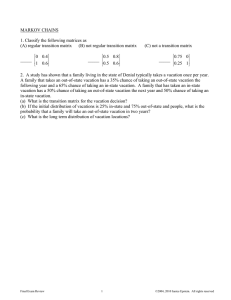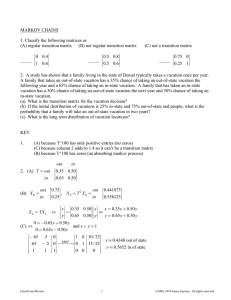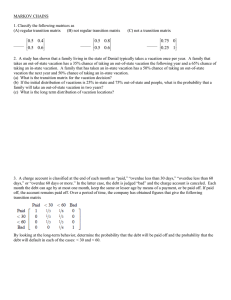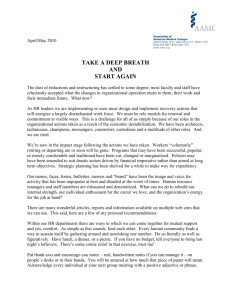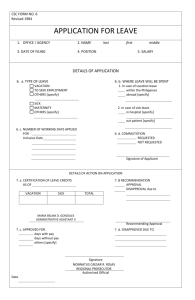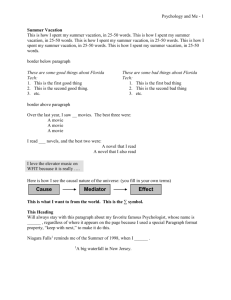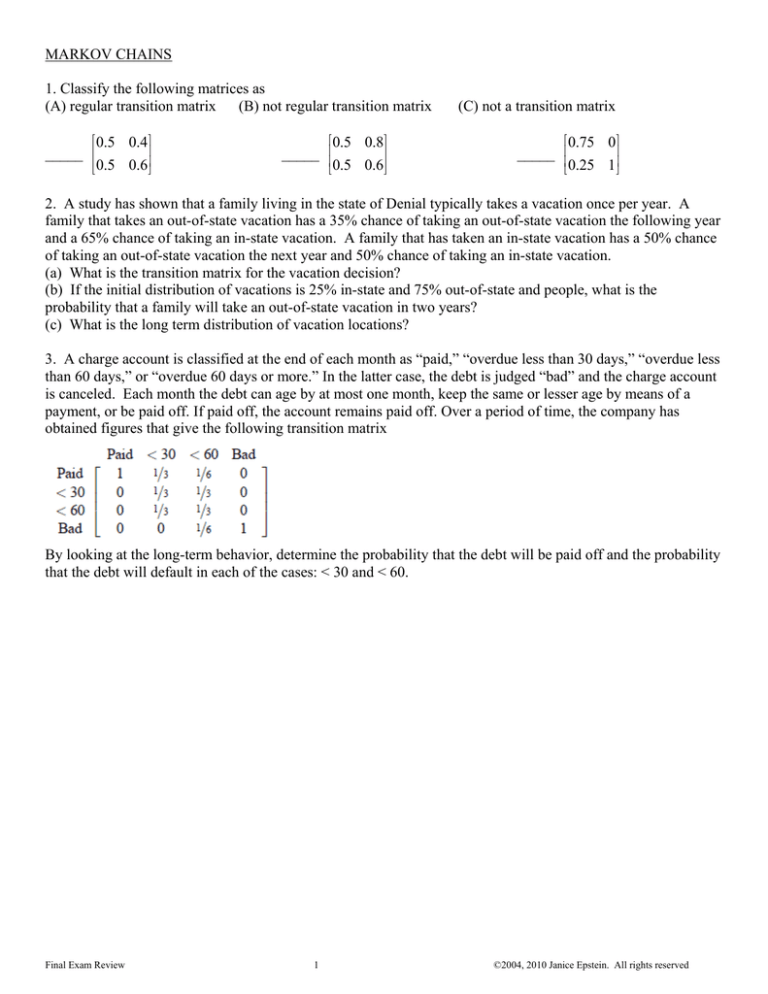
MARKOV CHAINS
1. Classify the following matrices as
(A) regular transition matrix (B) not regular transition matrix
é0.5 0.4ù
ú
_____ ê
êë0.5 0.6úû
é0.5 0.8ù
ú
_____ ê
êë0.5 0.6úû
(C) not a transition matrix
é0.75 0ù
ú
_____ ê
êë0.25 1úû
2. A study has shown that a family living in the state of Denial typically takes a vacation once per year. A
family that takes an out-of-state vacation has a 35% chance of taking an out-of-state vacation the following year
and a 65% chance of taking an in-state vacation. A family that has taken an in-state vacation has a 50% chance
of taking an out-of-state vacation the next year and 50% chance of taking an in-state vacation.
(a) What is the transition matrix for the vacation decision?
(b) If the initial distribution of vacations is 25% in-state and 75% out-of-state and people, what is the
probability that a family will take an out-of-state vacation in two years?
(c) What is the long term distribution of vacation locations?
3. A charge account is classified at the end of each month as “paid,” “overdue less than 30 days,” “overdue less
than 60 days,” or “overdue 60 days or more.” In the latter case, the debt is judged “bad” and the charge account
is canceled. Each month the debt can age by at most one month, keep the same or lesser age by means of a
payment, or be paid off. If paid off, the account remains paid off. Over a period of time, the company has
obtained figures that give the following transition matrix
By looking at the long-term behavior, determine the probability that the debt will be paid off and the probability
that the debt will default in each of the cases: < 30 and < 60.
Final Exam Review
1
©2004, 2010 Janice Epstein. All rights reserved

